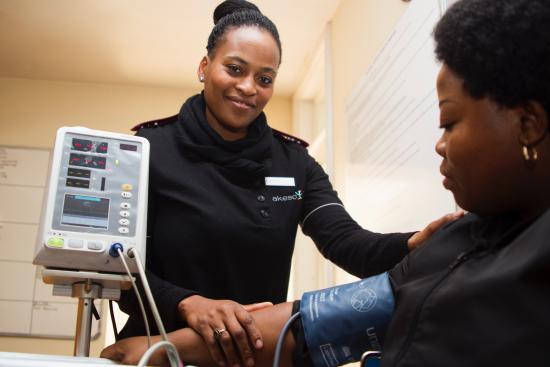
I start every patient visit in the emergency room (ER) the same way: by opening up their chart and looking through their old records. I was working a shift in the Oncology Pod last week and saw a patient with a complicated cancer history. Since the patient got all of their care through Ohio State University Wexner Medical Center (OSUWMC), I was able to spend five minutes prior to seeing that patient learning their complete history. I walked into the patient’s room and gave them a quick rundown of what I already knew of their previous care. From the patient’s smile, I could sense my knowledge of their history put them at ease.
Reflecting on my experience with this patient, I realized how my day brightens whenever an ER patient sees OSUWMC physicians because I know that the patient and I can be present and focus on what the current issue. After I’ve reviewed the patient’s most recent doctor visit, their medication list, and their past medical history, I’m confident that I have the foundation for our visit already set. This allows me to spend our valuable face-to-face time digging into the patient’s reason for visiting. While I can see some medical history on Care Everywhere for non-Ohio State patients, it is nowhere near as informative as what I see for OSUWMC patients.
I can often feel my patient’s frustration with explaining their medications, allergies, and conditions repeatedly to registration, a nurse, a resident, and finally me. It can feel like a waste of time and especially redundant for those with chronic conditions. It can be difficult for a patient to remember all of their relevant history, and they may not realize that a certain condition or medication is significant. Even something small like forgetting the dose of a medication can impact one's care. Having access to a patient’s global history, instead of just tidbits, saves time and frustration, while increasing diagnostic accuracy and quality of care.
Coordination of care is even more important when deciding on a patient’s disposition at the end of their ER visit. I’m sometimes on the fence about whether to discharge or admit a patient. For these patients, the ability to coordinate close follow-up makes all the difference. It’s much easier to assure follow-up if a patient is established with an OSUWMC provider because our case management team can quickly schedule an appointment or I can directly message a physician through our electronic medical record (EMR) to alert them of their patient’s needs. Many Ohio State primary care offices follow up with all patients who have had ER visits. Being a part of the same healthcare system also makes it easier for patients to use the MyHealth app and to take charge of their own care. Medical care is only getting more complicated, and the easiest way for a patient to make sure they have coordinated care is to access all their health care needs through one medical system.
